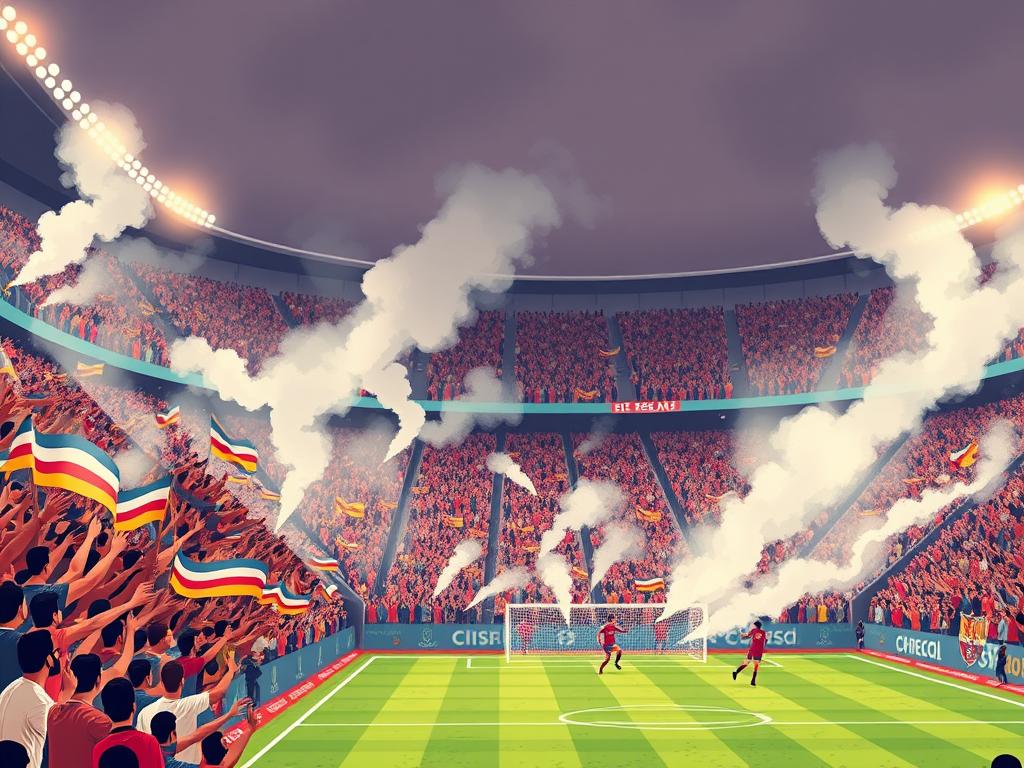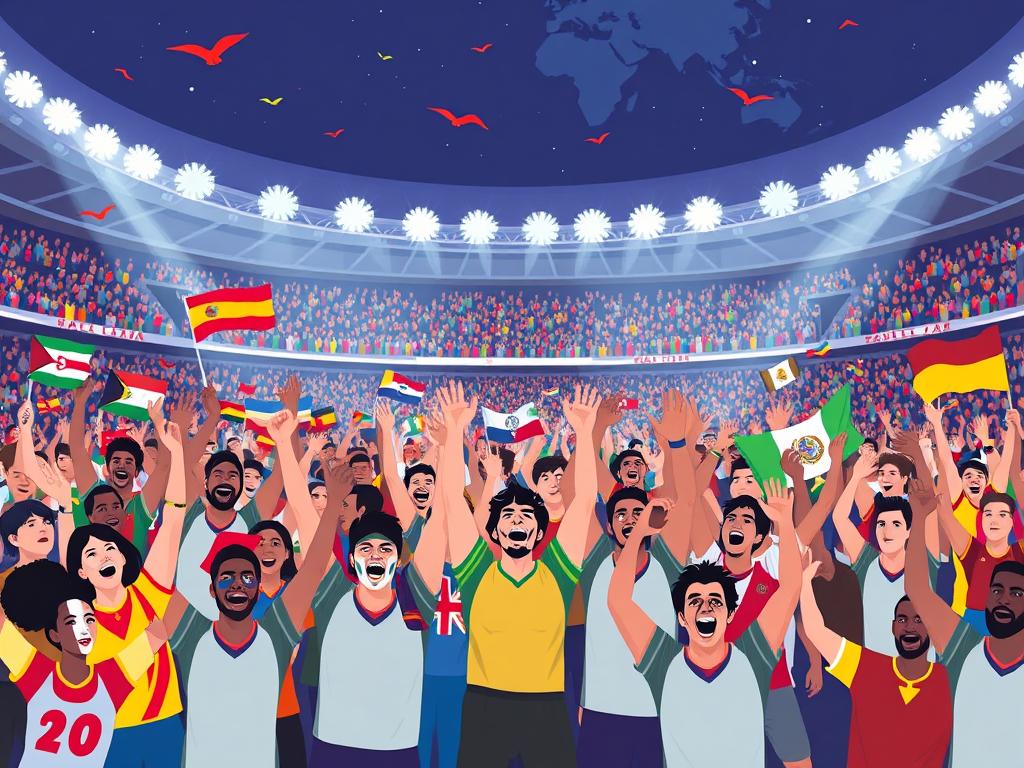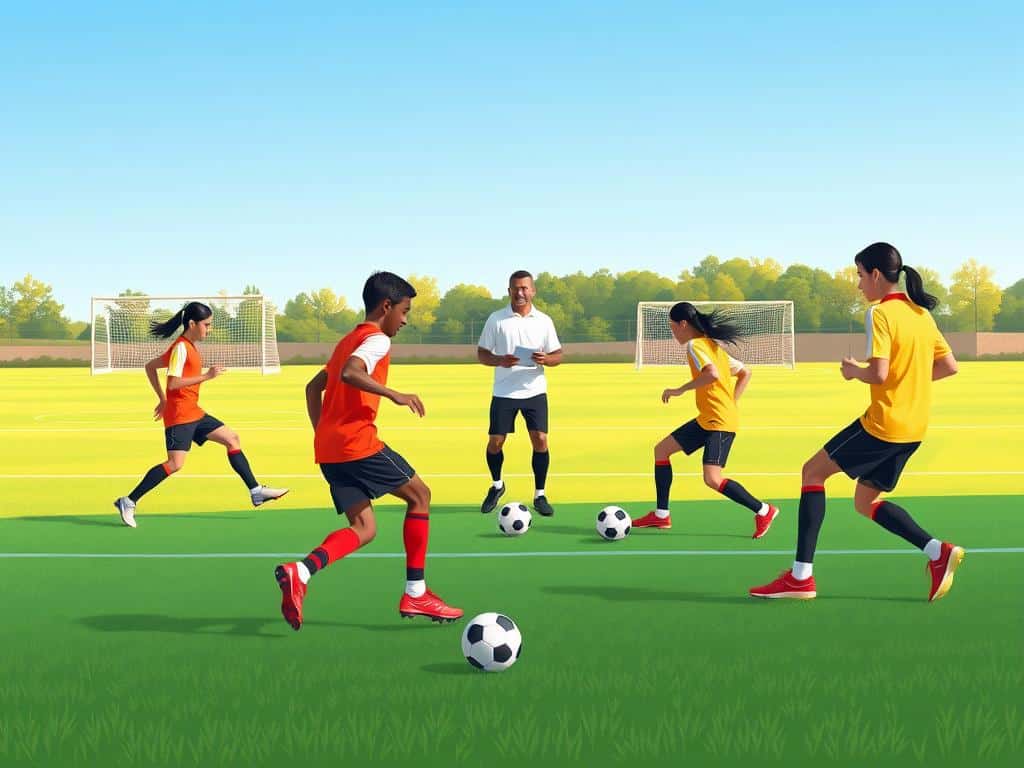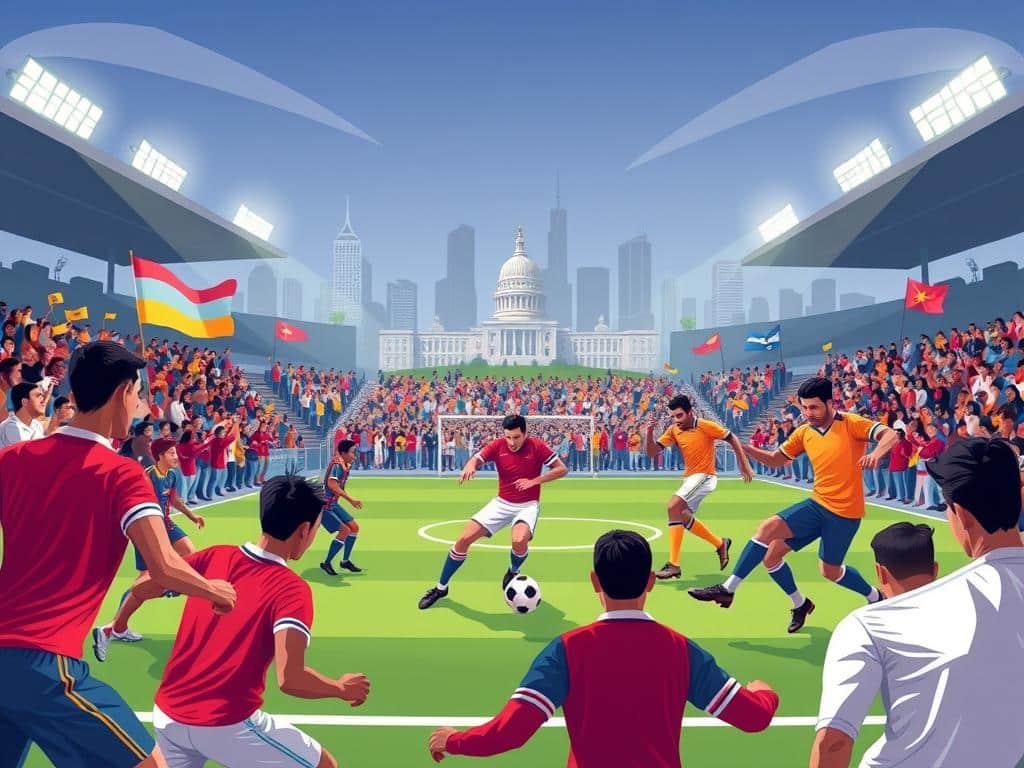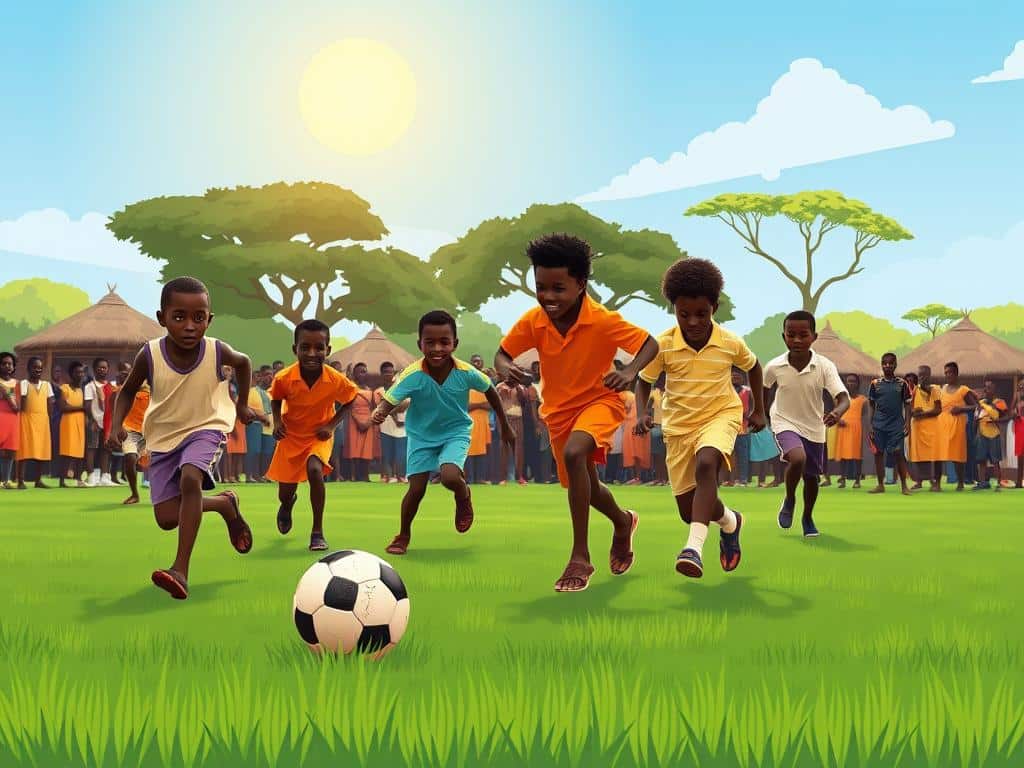history of soccer ultras started in packed terraces and small fan circles in Italy, then spread across the world with chants, drums, and huge banners that shape matchday culture today.
I grew up watching those choreographies — the flares, the tifo, the drumbeats — and I still get goosebumps when a stadium lights up. Ultras organized around relentless support, not street fighting, and that focus on pageantry changed how clubs and fans interact.
Early groups in Italy, Brazil’s torcidas organizadas, Argentina’s barras bravas, and Croatia’s Torcida Split each added local color and tactics. Over decades the movement adapted to new leagues, stadium rules, and political moments while keeping its core: unity, loud backing, and bold displays.
What you’ll get here: a clear, no-drama tour that explains how these fan groups differ from hooligan firms, how clubs sometimes cooperate with supporters, and why this chapter of football life still matters to the majority of matchday experiences.
Key Takeaways
- Ultras began in Italy and spread globally, shaping stadium atmosphere.
- They focus on displays and nonstop support rather than organized fighting.
- Local examples—Brazil, Argentina, Croatia—show how the movement adapts.
- Clubs and fans sometimes cooperate to stage large choreographies.
- The movement influenced how football fans experience matchday across continents.
What “ultras” means in football culture
I see these groups as the engine of matchday atmosphere. They are organized supporters who fill one stadium end with noise, color, and movement.
Active support, tifo, and the matchday “end”
Active support looks like constant chants, drums, megaphones, and coordinated banners. A planned tifo — giant mosaics, flags, and timed smoke — can lift players and unsettle opponents at big moments.
Flares and smoke are part of the visual language in some countries. They add drama but can cause safety clashes with stewards and police. Ultras often arrive early, carve out the end behind the goal, and organize away travel so the same presence travels with the team.
How these groups differ from hooligan firms
The key difference is purpose. While hooligans prioritize fighting, these groups focus on support and display. Violence has occurred around some groups, but support and choreography remain their main aims.
- They coordinate who leads chants and when to unveil tifo.
- They liaise with clubs for ticket blocks and setup time.
- Players can feed off the rhythm — drums and chants push a team through hard stretches.
Disputed beginnings and early roots
Origins are messy: several cities claim the first organized fan circles, and each left clear marks on what followed.
From Salerno and Florence fan circles to organized support
In Italy, small circles set patterns long before any label existed. Salerno’s “circolo salernitani fieri” formed in 1921. Florence’s “ordine del marzocco” followed in 1931.
These groups organized hymns, flags, and special trains. They showed how a club’s supporters could act as a coordinated unit for matchday life.
Brazil’s torcidas organizadas and Argentina’s barras bravas
Brazil had its first torcida organizada by 1939, rooted in club identity. Over later decades, rivalries hardened and some groups grew more violent in the 1970s.
Argentina’s barras bravas rose in the 1950s and added a sharper structure to local football rivalries, reshaping fan culture across the country.
Hajduk Split’s Torcida Split and the 1950 World Cup influence
Torcida Split formed on October 28, 1950, inspired by the 1950 World Cup’s color and pageantry. That moment shows how a global tournament can spark a lasting local identity.
- Key takeaway: the movement grew from singing and travel into organized support across the world.
| Country | Early Group | Founding Year | Notable Feature |
|---|---|---|---|
| Italy | Circolo Salernitani Fieri / Ordine del Marzocco | 1921 / 1931 | Hymns, flags, special trains |
| Brazil | First Torcida Organizada | 1939 | Club identity; became harder in 1970s |
| Argentina | Barras Bravas | 1950s | Structured rivalries and influence |
| Croatia | Torcida Split | 1950 | World Cup-inspired tifo and drums |
history of soccer ultras: the 1960s-1980s rise
The 1960s planted the seeds that turned casual fan clubs into organized, identity-driven ends. In Italy, Fossa dei Leoni (Milan) and Boys San (Sampdoria) led that shift by claiming sections, setting rules, and coordinating chants.
1969 marked a naming moment: Ultras Tito Cucchiaroni (Sampdoria) and Ultras Granata (Torino) first used the word “ultras” on banners. That label signaled a new, identity-led approach for fans and teams.
Choreography, banners, and flares
The 1970s normalized big visual routines. Giant banners, drumlines, timed displays, and fireworks became standard at big matches. These shows were crafted to lift home players and unsettle opponents.
Displays and flares were more than decoration; they marked territory and identity. Clubs began to expect choreographed support as part of matchday life.
Violence and wider spread
Those decades also saw social unrest bleed into stands. Terrace clashes and political tensions raised the stakes for many groups.
Tragic incidents occurred. In 1988, Inter fans caused the death of Nazareno Filippini, a reminder that rivalry can cross a dangerous line.
- 1960s: first organized ends and local control.
- 1969: “ultras” appears as a banner identity.
- 1970s: choreography, drums, flags, flares normalize.
- 1980s: look and methods spread across Europe and beyond.
| Period | Notable Groups | Key Practices | Impact |
|---|---|---|---|
| 1960s | Fossa dei Leoni, Boys San | End control, chants | Organized support; club coordination |
| 1969 | Ultras Tito Cucchiaroni, Ultras Granata | Banner identity, naming | Shift to identity-led sections |
| 1970s | Multiple Italian groups | Giant banners, drums, flares | Choreography becomes norm |
| 1980s | Italian exports to Europe, Asia, Australia | Coordinated displays and travel | Global spread; occasional dangerous incidents |
Italy’s central role—pageantry, power, and problems
Italy’s curva is equal parts theatre and power. Leaders, drum crews, and banner teams shape the mood before the first whistle. They plan mosaics, time reveals, and buy materials that cost tens of thousands for big matches.
![]()
Curva culture, hierarchy, and choreographies
Curvas run on clear ranks: capo leaders, choreo crews, and sub-groups who execute the show. Early stadium access helps them set up complex displays.
The result is dramatic support that lifts teams and scares opponents. Chants, flags, drums—precision matters.
Far-right symbols, racism, and stadium sanctions
Problems are real. Some groups have used far-right imagery and racist chants. Clubs and police face fines, partial closures, and point deductions after incidents.
Examples and mixed stances
Lazio’s worst excesses—like offensive stickers—stain the club’s image. Inter’s Curva Nord once defended abuse of a player as “pressure.” Napoli and Roma have also seen racist taunts and sanctions.
But many members act differently. Some groups fund hospitals, run food drives, and display anti-mafia banners. I’ve seen both cruelty and civic care in the same city.
| Club | Notable incident | Civic action |
|---|---|---|
| Lazio | Offensive stickers and trials | Occasional charity drives |
| Inter (Curva Nord) | Defended racist chants at a match | Local fundraising events |
| Napoli / Roma | Anti-Southern and racist abuse reported | Community aid during crises |
- Curva power shapes italian football atmospheres.
- Police and clubs walk a tightrope between support and safety.
- Reality is mixed—pageantry and politics co-exist in stadiums.
Europe beyond Italy: France, England, Scotland, Balkans, Nordics
From Paris to Belgrade, passionate ends shape how a match feels inside the stadium. These scenes share tools—drums, banners, choreography—but adapt to local rules and club ties.
PSG’s Collectif Ultras Paris and player pressure
In Paris, Collectif Ultras Paris set strict standards for star behavior. They have publicly pressured players like Neymar after transfer sagas. That pressure shows how members can influence team dynamics and public perception.
England’s emerging ultra-style groups
England is seeing a shift. Groups such as Holmesdale Fanatics, Blue Action, and the Ashburton Army bring drums and choreo to a country with a strong casuals past. They operate inside strict stewarding and ticket rules.
Scotland, the Balkans, and the Nordics
Scotland’s Green Brigade and Union Bears stage big-match displays with different politics but similar craft. In Serbia, Delije (Red Star) and Grobari (Partizan) turn derbies into intense spectacles, keeping police on high alert.
Denmark’s Sektion 12 and Brøndby’s Sydsiden prove Nordic crowds can be thunderous. Across Europe, new groups borrow parts—drums here, flags there—and clubs often coordinate logistics while police focus on away travel and flashpoints.
- Why it matters: organized ends lift teams during tight title fights and cup ties.
- Fans, clubs, and law enforcement negotiate how displays happen safely.
- For a deeper look at famous rivalries that fuel these scenes, see notable rivalries.
| Region | Notable Group | Characteristic |
|---|---|---|
| France | Collectif Ultras Paris | Player pressure; vocal standards |
| England | Holmesdale Fanatics / Ashburton Army | Drums, banners within strict stadium rules |
| Scotland | Green Brigade / Union Bears | Large-match choreos; political variety |
| Serbia | Delije / Grobari | High-intensity derbies; heavy police presence |
| Denmark | Sektion 12 / Sydsiden | Derby-day atmosphere that shakes stadiums |
Mediterranean and Lusophone scenes
Along the Mediterranean shore and into Portugal, matchday passion gets its own regional beat and style. I’ve seen how a named section can shape identity within a club and across a city.
Greece’s Gate culture
Gate names matter. In Greece, Gate 7 (Olympiacos), Gate 13 (Panathinaikos), Gate 4 (PAOK), and Super 3 (Aris) are more than locations — they are homes for supporters who lead chants and organize displays.
AEK’s Original 21 (Gate 21) shows how a number turns into a brand. Expect nonstop drumlines, flares in big derbies, and coordinated calls that echo through the stadium.
Portugal’s famous ends
In Portugal, Benfica’s No Name Boys and Diabos Vermelhos, Porto’s Super Dragões, and Sporting’s Juventude Leonina, Torcida Verde, and Directivo Ultras XXI define matchday color.
- Full-stand mosaics and layered banners are common at big matches.
- Leaders set tempo; ultra group crews prep materials and travel plans.
- Clubs often liaise with these groups to manage entrances and safety.
Why it matters: Mediterranean passion and Lusophone creativity use the same core tools — chants, flags, and support — but with different rhythms. When the whistle blows, all that prep becomes real pressure on opponents and officials.
| Country | Notable Section / Group | Club | Typical Features |
|---|---|---|---|
| Greece | Gate 7 / Gate 13 / Gate 4 / Original 21 / Super 3 | Olympiacos / Panathinaikos / PAOK / AEK / Aris | Drums, nonstop chants, flares, derby intensity |
| Portugal | No Name Boys / Diabos Vermelhos / Super Dragões | Benfica / Benfica / Porto | Large mosaics, layered banners, organized travel |
| Portugal (Sporting) | Juventude Leonina / Torcida Verde / Directivo Ultras XXI | Sporting CP | Historic ends, choreographed displays, vocal support |
Turkey and Morocco: ultras as political actors
In Turkey and Morocco, stands became stages for public action. I’ve seen how chants and banners move beyond matchday rituals into civic protest.
Beşiktaş’s Çarşı: activism and solidarity
Çarşı formed in 1982 as a Beşiktaş fan group and grew into a left-leaning civic force. Members joined anti-authoritarian protests and helped lead actions during the 2013 Gezi Park unrest.
During Gezi Park they united rival fans and even took part in street clashes, at times commandeering equipment to defend protesters. Their stance now includes anti-racism messages and solidarity drives that stretch beyond football.
Moroccan responses: protest anthems and a ban
After a fatal clash involving Raja Casablanca supporters, authorities banned choreographed displays and many stadium expressions in 2016. The ban aimed to curb spectacle after a death and to control crowd safety.
Ultras coordinated nationwide sit-ins, boycotts, and all-black shows. Protest anthems such as “F’Bladi Delmouni” gave voice to people’s anger. These actions helped push authorities to lift the ban later on.
- Key point: When groups act together, stadiums can become public squares and influence policy.
- Clubs host passion; organized fans channel it — sometimes into politics, sometimes into charity.
| Country | Notable Group / Moment | Outcome |
|---|---|---|
| Turkey | Çarşı — 2013 Gezi Park protests | Unified rival fans; civic activism; broader solidarity campaigns |
| Morocco | Raja Casablanca clashes — 2016 choreography ban | Nationwide sit-ins and boycotts; protest songs; eventual repeal of restrictions |
| Shared effect | Stadiums as public arenas | Organized fan action shaped policy and public debate |
Characteristics that define ultra groups
Good support starts with a tight-knit crew that treats matchday like a week-long project. That crew maps tasks, buys materials, and times every reveal so the end feels bigger than the sum of its parts.
Organization, funding, and club relationships
At the core are capos, drum leads, and logistics members. They write the match script, coordinate travel, and run rehearsals.
Subgroups handle banners, merch, bookings, and social feeds. Merch sales and donations fund paint, fabric, and travel subsidies.
Many clubs trade ticket blocks, storage rooms, or early stadium entry for dependable atmosphere. Those deals help but can cause friction when power is abused.
Displays, chants, drums, flags, and away mobilization
- Rehearsal matters: who lifts what and when creates timing that doubles perceived volume.
- Chants are short, planned, and rotated so the support team keeps energy for 90 minutes.
- Away travel runs on buses, trains, strict meet points, and clear exit plans for safety.
| Role | Task | Why it matters |
|---|---|---|
| Capo | Lead chants | Sets tempo for the stand |
| Choreo crew | Design & build displays | Creates visual pressure |
| Logistics | Travel & tickets | Keeps members safe and punctual |
Ultras, hooligans, and security
When passion tips into danger, a single moment can change lives and force new rules.
When support turns violent: incidents and responses
Most matchdays end without trouble. But some incidents cross from passion to crime. In 2018, a Liverpool fan, Sean Cox, suffered catastrophic injuries after an attack linked to Roma supporters; a man was jailed. Other episodes include public defenses of racist chants aimed at players, which strain relationships between clubs and teams.
Police strategies, stadium bans, and surveillance
Authorities treat risk seriously. Police use escort routes, alcohol limits, and targeted surveillance for high-risk fixtures. Stadiums impose bans, closed sections, and away restrictions after serious incidents. These measures aim to protect fans and preserve security.
- Most matchdays pass without incident, yet a single violent act can cause death or life-changing harm.
- Hooligans often seek fights; ultras usually seek presence — but overlaps happen when tempers flare.
- Media attention spikes after violence and reshapes public view of supporter culture.
- Clubs must balance support for fans with coordination with police to keep stadiums safe for teams and staff.
| Action | Purpose | Typical Result |
|---|---|---|
| Police escorts | Protect travel routes | Reduced street clashes |
| Stadium bans | Deter repeat behavior | Closed sections; ticket restrictions |
| Surveillance | Gather evidence | Prosecutions and targeted penalties |
Politics, ideology, and the stadium as a public square
Stadiums often act like open forums where banners and chants carry political messages to thousands. I’ve seen how a single display can spark debate across city streets and national headlines.
From neo-fascist symbols to left-wing coalitions
Some supporter ends lean right. In parts of Italy, groups have used neo-fascist insignia and shouted slogans that alarm wider society. Incidents like Anne Frank stickers at Lazio matches show how symbols can wound.
Other groups move left. Clubs such as St. Pauli and Turkey’s Çarşı organize anti-racist and anti-war actions. They weave worker solidarity and community drives into matchday choreography.
Anti-racism stands vs. racist abuse: conflicting currents
The movement contains both currents. Supporters argue over where identity ends and hate begins. Clubs and leagues try to draw lines, but enforcement is often imperfect.
- Stands broadcast politics to tens of thousands in a single afternoon.
- Some ends display racist language or extremist symbols; others lead anti-racism initiatives.
- Media spotlights extremes, shaping public views more than daily support work.
- When anti-racism wins, a stand can become a force for good for players and young fans.
| Side | Typical Actions | Impact on supporters and society |
|---|---|---|
| Far-right | Neo-fascist symbols, nationalist chants | Polarizes crowds; prompts sanctions and public condemnation |
| Left-wing | Anti-racism banners, solidarity campaigns | Builds community ties; can influence social causes beyond sport |
| Mixed / Local debate | Protests, boycotts, negotiated club deals | Shows movement contradictions; forces policy debate |
Media narratives, commercialization, and the movement’s stance
Commercial choices—late kickoffs, premium sections, last-minute fixture moves—have reshaped the rituals fans once took for granted.
Ultras groups often push back. They argue that rising ticket prices and TV-driven schedules break routines and make away travel harder. That opposition is practical: when a kickoff shifts to late night, parents, workers, and elderly supporters miss the match. Displays lose timing and impact.
Ultras vs. modern football: ticketing, TV, and corporate control
Clubs balance sponsor needs and matchday culture. Sometimes that means approved banners; other times it means confiscation. Fans see this as mixed signals.
- Modern football’s math: TV slots and premium seats push prices up and fragment traditional sections.
- Late kickoffs and sudden changes hurt away travel plans and kill momentum for choreographed displays.
- Where clubs collaborate with supporters, stadiums feel alive; where they clash, stands go quiet.
How media coverage shapes public opinion
The media focuses on the worst nights. A single brawl or racist episode can dominate headlines and define a movement for people who only catch the evening news.
That loop matters. Media amplification pressures clubs and police to act quickly, sometimes with blunt measures that punish many for the actions of a few.
| Issue | Effect on supporters | Typical club response |
|---|---|---|
| TV-driven kickoffs | Fewer families, disrupted displays | Scheduling concessions to broadcasters |
| Premium ticketing | Less affordable sections for regular fans | Higher revenue, but more protests |
| Media spotlight on violence | Stigma for entire ends | Tighter bans, surveillance |
Across the world, the movement keeps a clear stance: protect local matchday culture, keep ends affordable, and let supporters shape the feel. When that balance holds, games buzz. When it breaks, stadiums and football fans pay the price.
Where the movement stands today and what’s next
Modern ends now juggle creativity, crowd safety, and wider inclusion in ways older generations rarely faced. I still see the same hunger for big displays, but the rules and expectations around them have changed.
Regional variants and global spread
New groups appear in leagues you follow every weekend and in cities you only spot on highlight reels. The world keeps borrowing tifo kits, capo stands, and travel choreography and adapts them to local budgets and laws.
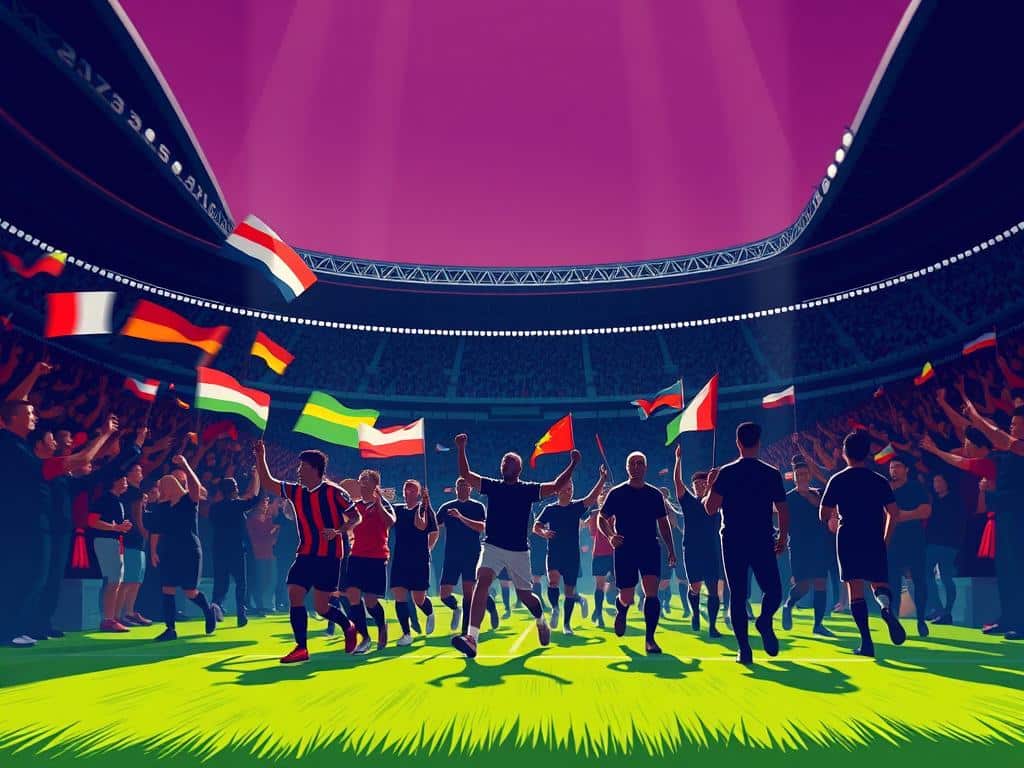
Today, many ultras experiment with safer materials, vetted pyro alternatives, and stewarded pre-match entries to protect displays and reduce risk.
Balancing spectacle, identity, and safety in modern stadiums
Teams want noise; leagues demand clear security plans. That creates a practical tension: how to keep passion without risking people.
- Security and clubs now negotiate storage, entry windows, and approved pyro substitutes.
- Players feed off loud ends — you can see it in late comebacks and post-match laps of appreciation.
- Support works best when it invites families, women, and newer fans without losing the end’s heartbeat.
| Pressure point | Common response | Likely outcome |
|---|---|---|
| Pyro & flares | Vetted alternatives, stewarded zones | Safer visual impact, fewer sanctions |
| Identity vs inclusion | Dialogue with clubs, community drives | Broader support base, preserved culture |
| Fan travel & security | Planned escorts and clear rules | Smoother away presence, lower incidents |
Many ultras will keep pushing creative limits, but the next chapter depends on trust: clear rules, mutual respect, and proof that modern stadiums can host color and sound safely. That balance keeps the movement alive and hopeful for players, teams, and fans around the world.
Conclusion
The best way to sum this up is simple: organized support changes a matchday more than a single chant ever could.
Ultras and regular fans build identity, noise, and color that shape how players and crowds feel. Most people come for connection and the shared rush — the majority want pageantry, not trouble.
Football works best when clubs and stands agree on a clear stance that keeps people safe while letting creativity breathe. A strong support team helps displays land without risk and helps a group welcome newcomers.
If you love noise, tifo, and togetherness, learn the songs, respect the rules, and add your voice. That is how passion stays alive today.

